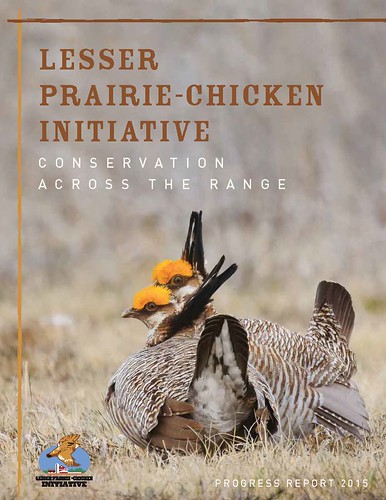Learn more about prairie chicken conservation efforts by downloading this new report, Lesser Prairie-Chicken Initiative: Conservation across the Range. Click to download the report.
Cattle and lesser prairie-chickens both need healthy rangeland to thrive. Through voluntary conservation efforts, farmers and ranchers in the southern Great Plains can restore habitat for this iconic bird while strengthening working lands.
The Lesser Prairie-Chicken Initiative (LPCI), a partnership led by USDA’s Natural Resources Conservation Service (NRCS), works to enhance lesser prairie-chicken habitat one ranch at a time. A number of the initiative’s successes are highlighted in a new report called the Lesser Prairie-Chicken Initiative: Conservation across the Range.
Since 2010, farmers and ranchers have made conservation improvements to 1 million acres by implementing sustainable grazing systems and removing invading woody species to restore prairies.
About 95 percent of lesser prairie-chicken habitat is on privately-owned lands, making these conservation efforts crucial to the bird’s rebound. The bird, which the U.S. Fish and Wildlife Service designated as threatened in 2014, numbers about 29,000. The goal is to boost its population to an average of 67,000 over a 10-year period.
The report highlights the conservation efforts of a number of ranchers, including:
- Ted Alexander, who has boosted the health of grazing lands and prairie chicken habitat by using prescribed burning and grazing, which enable native grasses to flourish on his Kansas ranch.
- Bill Barby, who uses a sustainable grazing system that promotes prairie health, providing drought-resilient forage for cattle and habitat for prairie chickens on his Kansas ranch.
- Willard Heck, who is removing hundreds of acres of invading mesquite trees to restore habitat. Research shows that lesser prairie-chickens stop nesting in grasslands that have just one tree per 1.2 acres.
NRCS’ conservation efforts for the lesser prairie-chicken are part of the agency’s Working Lands for Wildlife partnership, which directs public and private conservation investments that improve struggling landscapes, like the prairie of the southern Great Plains, while strengthening agricultural operations.

No comments:
Post a Comment
Note: Only a member of this blog may post a comment.